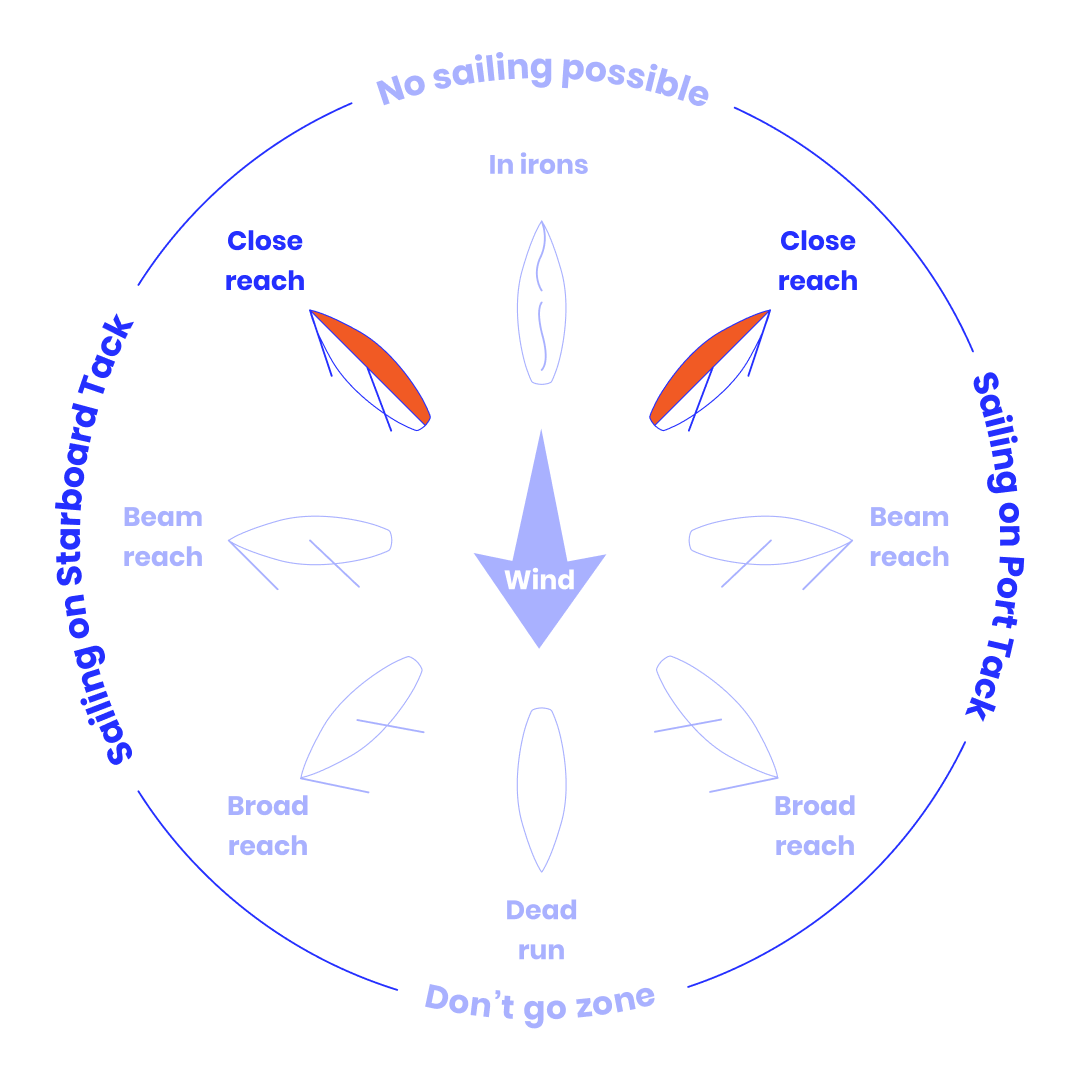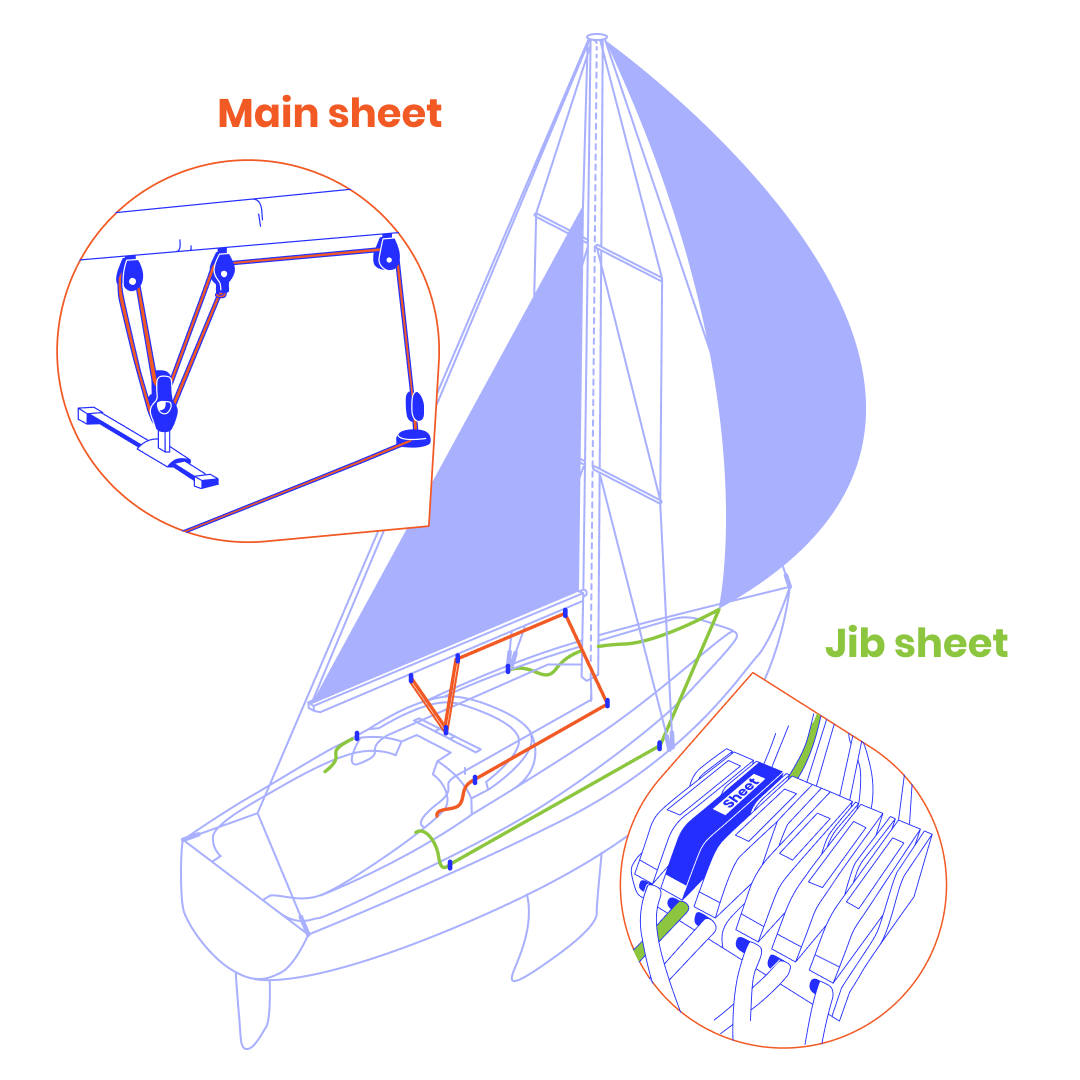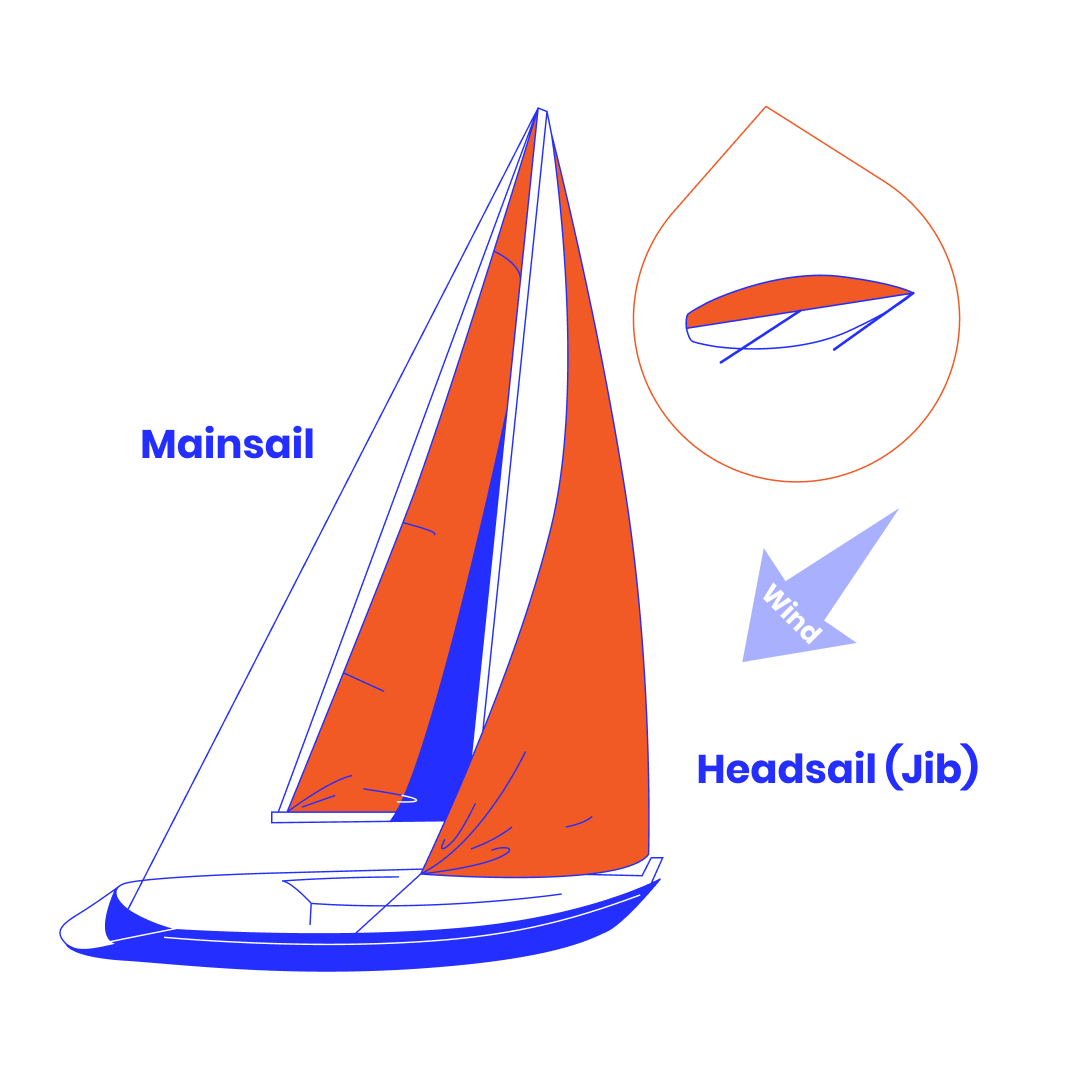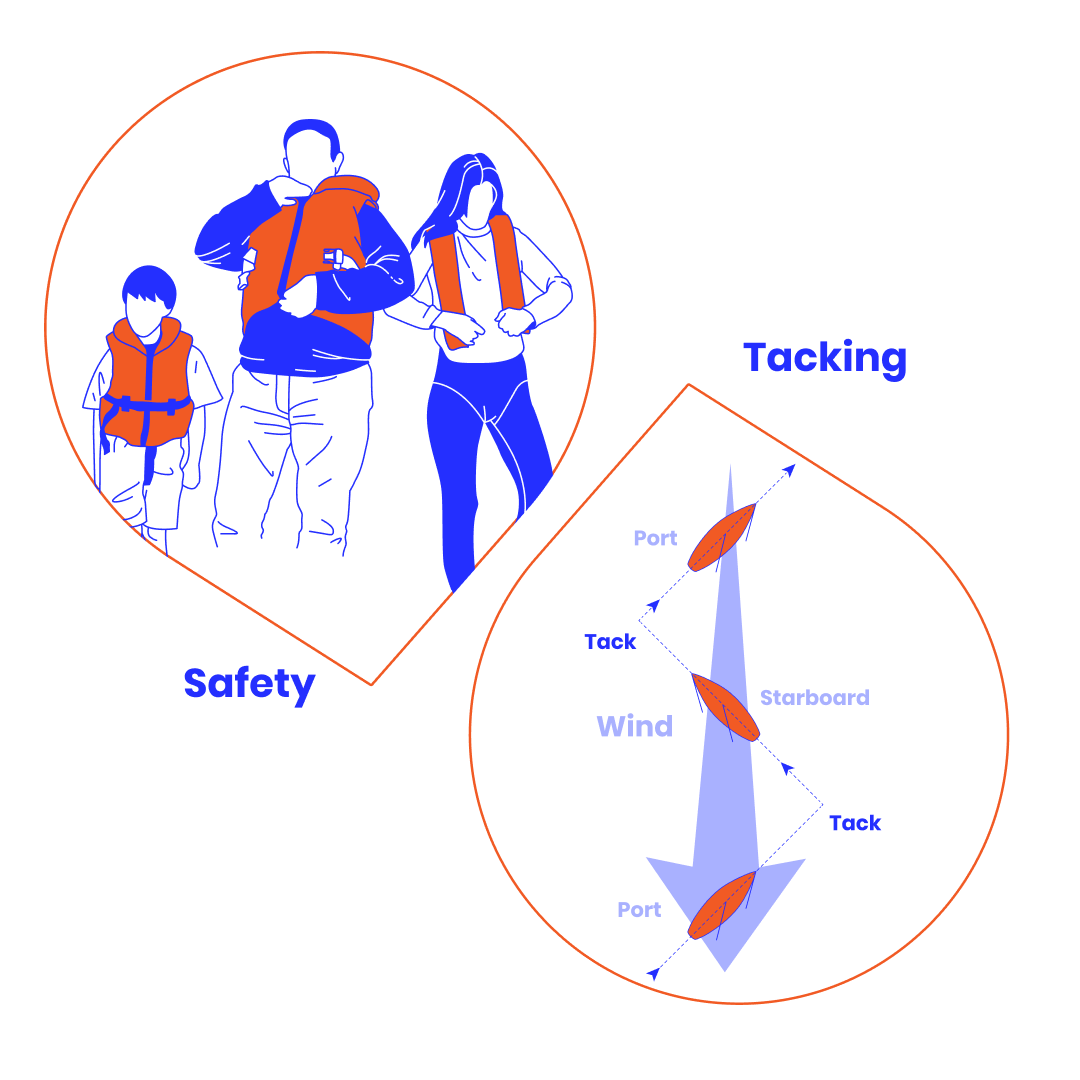Sailing at Broad Reach: Beginner’s Essentials
Whether you’re new to sailing or looking to sharpen your skills, this how-to guide with helpful illustrations has you covered, helping you build a strong foundation for sailing at Broad Reach.
Whether you're setting sail for the first time or looking to enhance your sailing skills, this guide is your compass for navigating Close Reach sailing. We'll walk you through the essentials and techniques to ensure your Close Reach sailing is a smooth and enjoyable experience.
'Points of sail' refers to the different positions at which a sailboat can sail relative to the wind direction. Each point of sail comes with its unique sail adjustments and considerations for effective boat handling.
Sailing at a 'Close Reach' means sailing at a sharp angle into the wind (upwind), typically about 45 degrees off the bow (front).
To achieve optimal speed while maintaining forward direction, the boat should be correctly positioned to the wind, and the sails should be properly trimmed (set).

When the wind comes from behind the boat, it simply pushes the sail. However, when the wind blows from the front of the boat, the shape of the sail acts like an airplane wing, producing lift, allowing the boat to sail towards the wind.
In this way, even when the wind blows from the front of the boat, you'll feel the sail 'filled' with wind and pulling forward. Therefore, you will need to control the position of the front sail (jib) and the main sail (mainsail) by pulling or releasing the appropriate lines (ropes), known as the 'jib sheet' and 'main sheet'.

When sailing at the Close Reach, releasing the sails too much will cause them to flap in the wind, preventing the boat from moving forward. Conversely, if you tighten the sails too much, the boat will also lose potential speed or even come to a stop.
Regarding the boat's position, if you set the sails close-reached but then steer away from the wind, it has the same effect as overtightening the sails. In such cases, you'll need to readjust the sails to find their optimal position.
In practical terms, considering your direction of travel, set the sails (trim the sails) so that they fill with wind without flapping (luffing), and continue steering the boat aligned with the optimal fullness of the sails.
Here are the five steps of the Close Reach technique:
• Angle: Find the right balance in the boat's position by steering closer or further into the wind.
• Trim: Trim both the mainsail and jib so that they fill with wind without luffing (flapping).
• Speed: Keep an eye on speed indicators and adjust sail trim and boat angle to maintain consistent speed.
• Body: Keep low and steady, and if the boat is small, position yourself to counteract the boat's heeling effect.
• Telltales: Learn how to read special pieces of fabric attached to your sails called 'telltales', helping you adjust your sails for maximum efficiency.

In addition to technique, pay attention to practical tips that will help you anticipate possible situations you may encounter when sailing at Close Reach.
Here are five tips for Close Reach sailing:
• Weather: Stay informed about weather conditions and be cautious of sudden changes in wind direction and strength.
• Tacking: Practice turning the bow into the wind (tack) and zig-zag maneuvering (tacking) to sail into the wind.
• Experience: Spend time getting to know your boat; different boats may have specific characteristics.
• Safety: Always prioritize safety; wear appropriate safety gear, be aware of your surroundings, and know navigation rules.
• Learning: Attend a sailing course, read relevant content, and seek advice from experienced sailors to enhance your skills.
Now that you understand what a Close Reach course is, along with its mechanics and technique, you have a solid theoretical foundation.

Sailing at the Close Reach is a rewarding skill and if you want to learn more, you're welcome to download the app and access our free sailing course. By understanding the principles of sail trim, boat position, and wind direction, you're well on your way to becoming a proficient sailor. Download the app, and we would love to see you on our Yapp Sailing Course!
Receive email notifications whenever we publish new and exciting content, stay informed and inspired!
Learning to sail has never been this interactive and accessible. Explore our engaging sailing course today, it's free and fun! The mobile app is available on both iOS and Android
Receive email notifications whenever we publish new and exciting content, stay informed and inspired!
Nice article, great job, Nick! Love it:)
thanks!